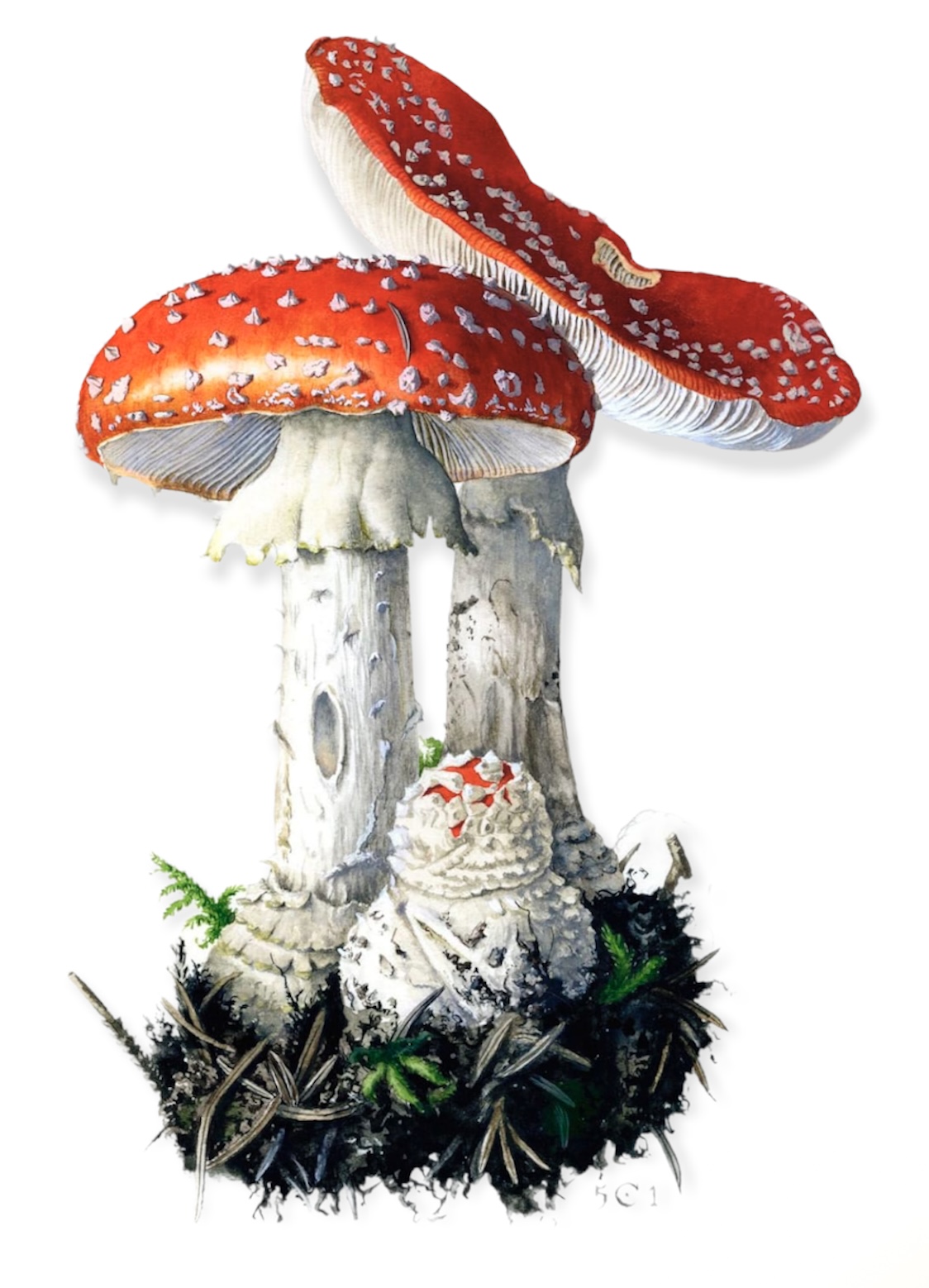Amanita Legends I
- AmanitaMicrodose®

- Sep 6, 2022
- 3 min read
Updated: Jun 16, 2023

On "Curing", drying, Muscarine, Hydrazine and other Amanita legends. Part I
As Amanita season is fully open now, we would like to focus your attention on several topics that repeatedly show up in discussion groups, forums, blogs and psychedelic portals. These urban legends make Amanita misty and moody Entity that gives its favors only to those who follow the "Rules" sanctified by Ritual and Tradition, but in fact come from misunderstanding of biology and biochemistry of the mushroom.
"Curing"
This is the largest and most complex misunderstanding of Amanita's chemistry. "Theory" says that dried mushrooms must be kept 3 months in a cold, dark place before consumption of any kind. In this time it amplify its "power" and get rid of poisonous substances.
Well, what will happen if you place well dried mushrooms in an air-tight, cool and dark place? Absolutely nothing important because such conditions prevent any chemical changes on a larger scale. Every herbalist, druggist and chemist know that. Active compounds of Amanitas are perfectly stabile in room temperature.
There are several "explanations" for the need of "curing" you may find in the web. Lets take a look:
- because Ibotenic acid needs to decarboxylize.
No, it will not decarboxylize to muscimol by laying in darkness. There are four main factors causing decarboxylation: temperature, UV light, acidic environment and animal/fungal enzymes. Application of any of these or its combination results in efficient decarboxylation of ibotenic acid.
*The most optimal temperature of rapid decarboxylation varies in a range of 70 - 115 celsius degree. It of course will also happen in much lower temperatures, starting from about 40 degrees, but in this case it will take hours or even days to complete the process.
*UV light of the sunlight or UV lamp causes isomerisation of ibotenic acid to less stabile muscazone and thus enhances generation of muscimol. This explains research that indicate higher ratio of muscimol/ibotenic acid in mushrooms that grow in open spots and earlier in the summer, than those fruiting in late autumn. It is a matter of insolation.
*Acidic environment. Ibotenic acid chemically is a weak aminoacid that in presence of any stronger organic or inorganic acids decomposes releasing carbon dioxide. This is the case of so called "Soma" drink made by maceration or decoction of dried or fresh mushrooms in fruit juices. Fruit juices like grape, apple, lemon or orange juice have high concentrations of citric, ascorbinic, malic and/or tartaric acid which serves as agents of decarboxylation.
*Enzymatic decarboxylation takes place during digestion of the mushrooms and is a base of Inuit's method with use of reindeer urine.
- because Hydrazine needs to decompose
The "Hydrazine-gate" came up several years ago, while Amanita topic was not so popular as today. Someone found in the web one laboratory report where trace amounts of hydrazine were noted. And everyone forgot about it. Then, few years ago, the real problem of hydrazine was found in regard to mushrooms of Agaricus genus. In this case concentrations of various hydrazine derivatives were estimated on health risk level. The topic became viral because it refers to most popular and commercially important mushrooms like Agaricus bisporus that is Champignions and Lentinula edodes which is Shiitake.
What all of this have to do with Amanita muscaria? Well, nothing except old, alternative and out of date name of Fly agaric, which is "Agaricus muscarius". This name is still in use by american homeopaths and in my opinion someone connected the dots that in fact do not exist. So to put it all plainly: there is not even one scientific evidence or source for relevant concentration of hydrazine in Amanita mushrooms. This problem applies to Agaricus mushrooms.
- because Muscarine needs to decompose
Muscarine is an alkaloid that naturally occur in Amanita species in trace amounts and has no relevant impact in consumption of Amanita muscaria unless you will highly overdose it. Like ibotenic acid it will not disappear only because you will keep your mushrooms in a dark place. Chemical compounds are not afraid of darkness.
There is also interesting variation of "curing" with "ventilating" the mushrooms once or twice a week. What is happening then? First of all you are regularly exposing your dried mushrooms to air moisture and oxygen. Absorbed moisture may and in most cases will start moulding and rotting processes and make your mushrooms unsafe to health of your digestive tract. The oxygen is reactive to all of active substances and will simply lessen its content in your mushrooms. The main rule of every herbalist is if something was once dried, should be kept air-tight. Ventilating dried mushrooms is really odd idea.
Next time we will focus on drying methods. There is also several interesting legends in this area.






Comments